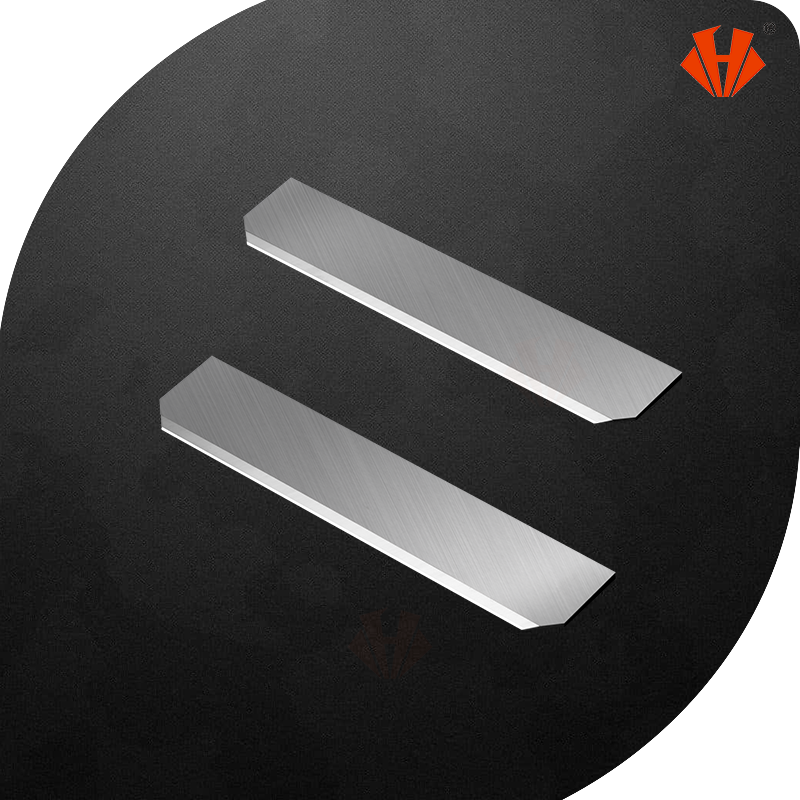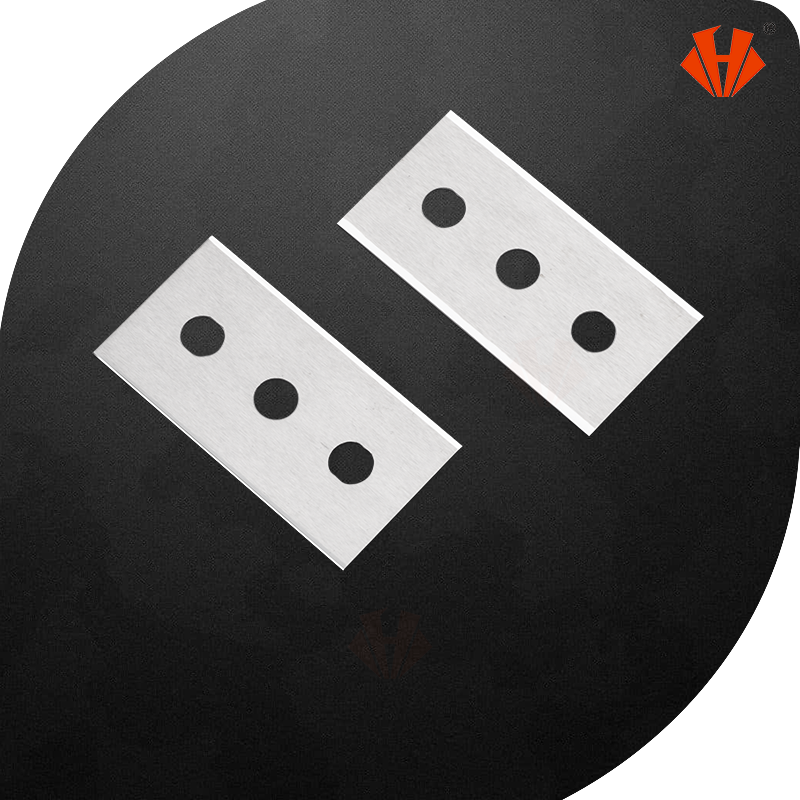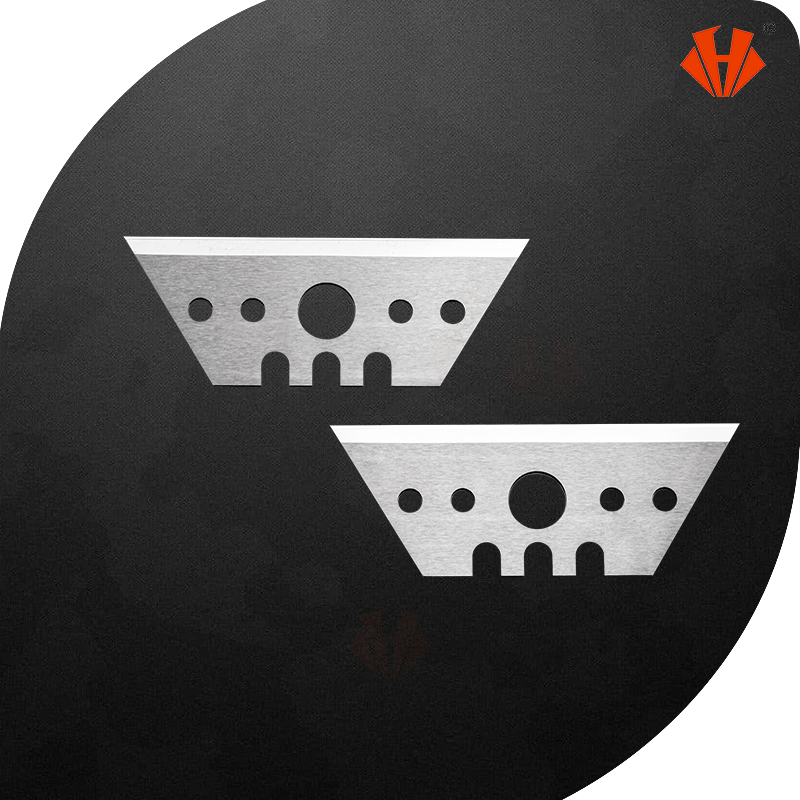With the continuous advancement of materials science, the development and application of special corrosion-resistant tungsten carbide will further expand the application range of tungsten carbide blades. By adding alloying elements, optimizing heat treatment processes, and improving surface treatment technologies, future tungsten carbide blades are expected to maintain excellent performance in a wider range of corrosive environments, providing more reliable and efficient processing solutions for various industries.
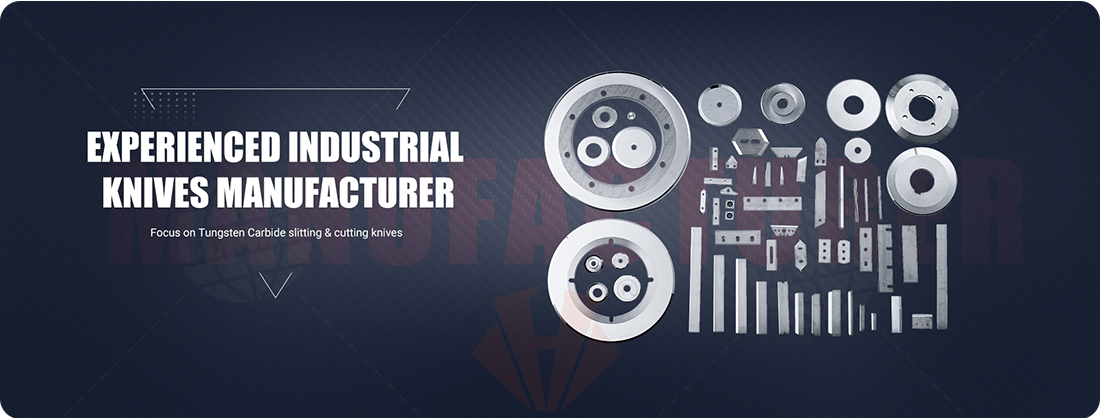
1. About Tungsten Carbide Blades
Tungsten carbide, formally known as cemented carbide, is an alloy material primarily composed of tungsten carbide, produced through a powder metallurgy process. It is characterized by high hardness and excellent wear resistance, maintaining its hardness essentially unchanged even at 500°C and still possessing high hardness at 1000°C. This exceptional performance makes tungsten carbide an excellent choice for manufacturing high-performance cutting tools, widely used in various cutting tools such as lathe tools, milling cutters, planers, drills, and boring tools.
Modern tungsten carbide blades are mainly composed of two basic components: tungsten carbide and cobalt. The tungsten carbide hard phase provides the extreme hardness and wear resistance required for the blade, while the cobalt binder phase imparts a certain degree of toughness to the material. In a typical tungsten carbide blade composition, tungsten carbide and cobalt account for 99% of the total, with other metals making up 1%. This unique microstructure gives tungsten carbide blades both a hardness unattainable by high-speed steel and wear resistance far exceeding that of ordinary tool steel, holding a significant position in the field of mechanical processing.
With advancements in materials science, the tungsten carbide family has also developed various specialized grades, including dozens of series such as high-wear-resistant tungsten carbide, high-impact-resistant tungsten carbide, high-temperature-resistant tungsten carbide, non-magnetic tungsten carbide, and fine-grained ultra-fine particle tungsten carbide. These differently formulated tungsten carbide materials provide optimized solutions for various specific application scenarios. For example, corrosion-resistant tungsten carbide used in chemical environments may add alloying elements like chromium and nickel to further enhance its anti-corrosion properties.
Performance Comparison of Common Blade Materials
| Material Type | Hardness (HRA) | Wear Resistance | Toughness | Corrosion Resistance |
| Tungsten Carbide Cemented Carbide | 89-95 | Extremely High | Medium | Medium to Good |
| High-Speed Steel | 80-85 | Medium | Good | Medium |
| Tool Steel | 70-75 | Medium | Good | Medium |
| Ceramic Blades | 92-95 | Extremely High | Low | Excellent |
Analysis of Corrosion Resistance Performance of Tungsten Carbide Blades
1. Corrosion Resistance Mechanisms and Characteristics
The corrosion resistance of tungsten carbide blades primarily stems from their special chemical composition and microstructure. Basic tungsten carbide consists of tungsten carbide and cobalt. Tungsten carbide itself has considerable chemical stability and can resist erosion by various media. The cobalt binder phase can also form a protective oxide layer at room temperature, further slowing the corrosion process. In practical applications, tungsten carbide demonstrates a certain resistance to acids, alkalis, saline water, and other chemicals, allowing it to maintain stable performance in various corrosive environments.
Research indicates that the corrosion resistance of tungsten carbide is quite excellent in specific environments. For instance, in aluminum liquid corrosion tests, the average corrosion rate of pure tungsten is only about 1/14 that of H13 steel, showing excellent corrosion resistance. This superior anti-corrosion performance makes tungsten carbide a viable alternative to traditional steel in the foundry industry and high-temperature chemical environments. Similarly, in corrosion tests of high-specific-gravity tungsten alloys, researchers found that these materials generally have strong corrosion resistance, maintaining basic structural integrity after laboratory immersion corrosion tests and natural environment exposure tests.
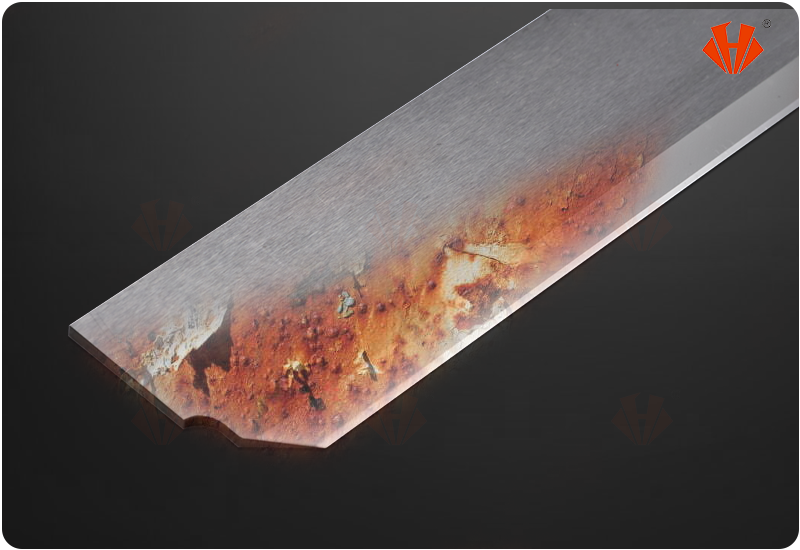
2. Surface Characteristics and Corrosion Behavior
The corrosion resistance of tungsten carbide blades depends not only on the material itself but also significantly on its surface state and post-processing. The finely ground and polished surface of a tungsten carbide blade can form a microscopic protective layer, effectively blocking the intrusion of corrosive media. Some high-end tungsten carbide blades also use surface coating technologies (such as TiN, TiCN, DLC, etc.), which not only enhance the cutting performance of the blade but also significantly improve corrosion resistance.
It is important to note that the corrosion resistance of tungsten carbide is not absolute. Studies show that under long-term natural environmental exposure, the binder phase in tungsten alloy materials has a certain tendency to corrode, potentially leading to a decrease in material plasticity. This phenomenon also exists in conventional tungsten carbide with cobalt binder phase. When in specific corrosive environments such as humidity and salt spray, the cobalt phase may be preferentially corroded, thereby affecting the overall performance of the blade. Therefore, selecting specially treated corrosion-resistant tungsten carbide grades is particularly important in application scenarios with high corrosion risks.
3. Development and Progress of Corrosion-Resistant Tungsten Carbide
To meet the application needs in extreme environments such as chemical and marine industries, materials scientists have developed specially designed corrosion-resistant tungsten carbide models. These advanced tungsten carbides significantly improve the chemical stability of the material by adding alloying elements such as chromium, nickel, and molybdenum to the traditional formula. For example, a patented cast chemical fiber blade resistant to sulfuric acid corrosion effectively reduces the brittleness of the tungsten carbide itself through special tempering, forging, and heat conduction oil quenching processes, while also giving the blade good resistance to sulfuric acid corrosion.
| Environment Type | Corrosion Degree | Main Corrosion Form | Performance |
| Ambient Atmospheric Environment | Very Low | Slight Oxidation | Excellent |
| Acidic Environment (pH<4) | Medium to High | Selective Corrosion of Binder Phase | Requires Special Grade |
| Alkaline Environment (pH>9) | Low to Medium | Uniform Surface Corrosion | Fair to Good |
| Saline Water/Marine Environment | Medium | Pitting, Crevice Corrosion | Requires Protective Measures |
| High-Temperature Molten Metal | Low | Interfacial Reaction | Excellent |
Ill:corrosion Behavior of Tungsten Carbide Materials in Different Environments
Environmental Suitability Analysis: Conditions Where Tungsten Carbide Blades Excel
About Huaxin:Tungsten Carbide Cemented Slitting Knives Manufacturer
CHENGDU HUAXIN CEMENTED CARBIDE CO.,LTD are a professional supplier and manufacturer of tungsten carbide products, such as carbide insert knives for woodworking,carbide circular knives for tobacco&cigarette filter rods slitting,round knives for corugatted cardboard slitting ,three hole razor blades/slotted blades for packaging ,tape,thin film cutting,fiber cutter blades for textile industry etc.
With over 25 years development, our products have been exported to U. S. A, Russia, South America,India,Turkey,Pakistan,Australia,Southeast Asia etc. With excellent quality and competitive prices, Our hard working attitude and responsiveness are approved by our customers. And we would like to establish new business relationships with new customers.
Contact us today and you will enjoy benefits of good quality and services from our products!
The high performance tungsten carbide industrial blades products
Custom Service
Huaxin Cemented Carbide manufactures custom tungsten carbide blades, altered standard and standard blanks and preforms, starting from powder through finished ground blanks. Our comprehensive selection of grades and our manufacturing process consistently delivers high-performance, reliable near-net shaped tools that address specialized customer application challenges across diverse industries.
Tailored Solutions for Every Industry
custom-engineered blades
Leading manufacturer of industrial blades
Customer common questions and Huaxin answers
That depends on the quantity, generally 5-14days. As an industrial blades manufacturer, Huaxin Cement Carbide plans the production by orders and customers' requests.
Usually 3-6 weeks, if you request customized machine knives or industrial blades that are not in stock at the time of purchasing. Find Sollex Purchase & Delivery Conditions here.
if you request customized machine knives or industrial blades that are not in stock at the time of purchasing. Find Sollex Purchase & Delivery Conditions here.
Usually T/T, Western Union...deposits firstm, All first orders from new customers are prepaid. Further orders can be paid by invoice...contact us to know more
Yes, contact us, Industrial knives are available in a variety of forms, including top dished, bottom circular knives, serrated / toothed knives, circular perforating knives, straight knives, guillotine knives, pointed tip knives, rectangular razor blades, and trapezoidal blades.
To help you get the best blade, Huaxin Cement Carbide may give you several sample blades to test in production. For cutting and converting flexible materials like plastic film, foil, vinyl, paper, and others, we provide converting blades including slotted slitter blades and razor blades with three slots. Send us a query if you're interested in machine blades, and we'll provide you with an offer. Samples for custom-made knives are not available but you are most welcome to order the minimum order quantity.
There are many ways that will prolong the longevity and shelf life of your industrial knives and blades in stock. contact us to know about how proper packaging of machine knives, storage conditions, humidity and air temperature, and additional coatings will protect your knives and maintain their cutting performance.
Post time: Oct-11-2025


